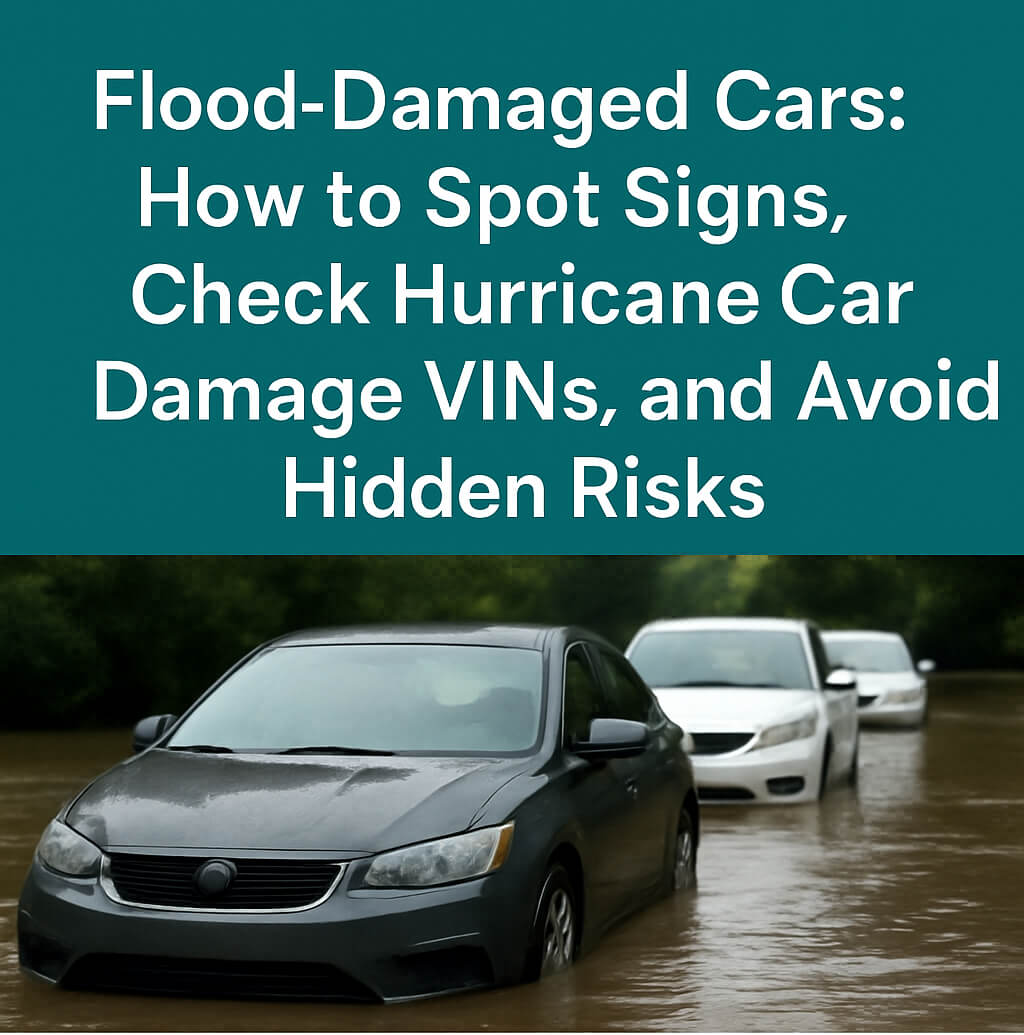
Flood-Damaged Cars: How to Spot, Avoid & Check VIN History
Avoiding Flood-Damaged Cars: Everything You Need to Know Before Buying
Flood-damaged cars, also known as hurricane damaged cars, often re-enter the used car market after storms and other natural disasters, posing serious risks to buyers. Moisture or rust inside the cabin, unusual odors, and electrical issues can all be signs of a flooded car.
The most reliable way to avoid buying one is by:
Closely inspecting for visible signs
Checking the vehicle’s history using a hurricane car damage VIN report
Looking for red flags like “salvage/flood” titles
Buying a water-damaged vehicle can lead to expensive repairs and long-term reliability issues. Many flood-damaged cars look normal at first glance — but have hidden problems beneath the surface.
Knowing what to look for helps you avoid costly mistakes and make a safer, more dependable purchase.
Why Flood-Damaged Cars Are a Serious Risk
Vehicles exposed to water damage can develop hidden problems that impact safety, health, and value.
Long-Term Mechanical and Electrical Issues
Floodwater can penetrate engines, transmissions, and other mechanical parts, leading to:
Internal corrosion
Rust
Eventual part failure (often months later)
Wiring harnesses, sensors, and computers can short-circuit
Electrical systems are especially vulnerable:Water trapped in sealed connectors causes intermittent issues
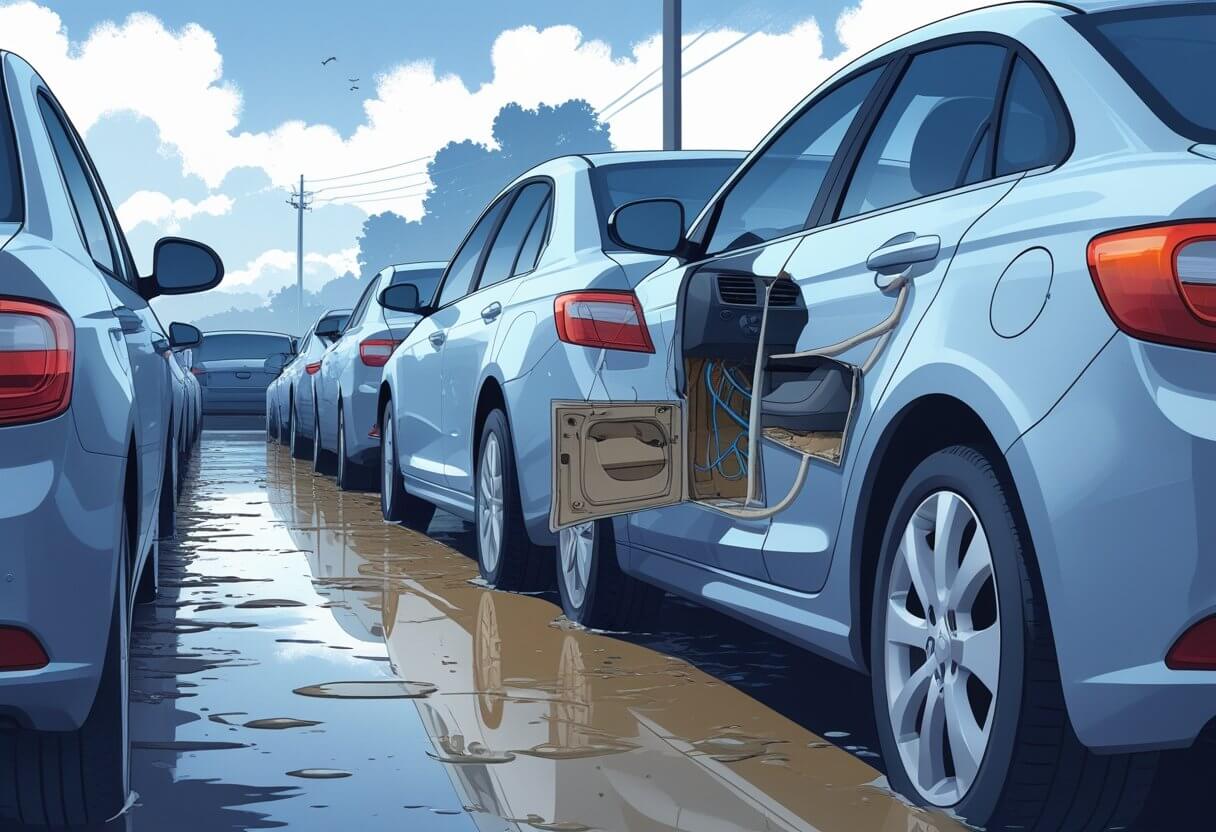
Warning signs of a flooded car:
Dashboard warning lights
Erratic gauges
Unpredictable electronic features
Over time, these issues worsen — resulting in costly and repeated repairs.
Health Hazards from Mold and Contaminants
Stagnant water trapped in seats, carpet, or headliners creates a breeding ground for mold, mildew, and bacteria. Exposure can:
Trigger allergies
Worsen asthma
Cause respiratory issues
Hidden dampness in air vents spreads spores every time the AC runs. Flooded cars may also carry sewage residue, chemicals, and debris from floodwaters — posing risks to current and future passengers.
Financial Consequences for Buyers
Risk Category | Consequences |
|---|---|
💸 Repair Costs | Extremely high due to hidden corrosion, electrical failures, and mold removal |
🚨 Reliability | Frequent breakdowns and unpredictable performance |
⚡ Mechanical Failure | Engine, transmission, and electrical systems may fail months later |
📑 Insurance Coverage | Policies often exclude flood-damaged cars or offer reduced coverage |
📉 Resale Value | Severely reduced resale price; very hard to sell in the future |
⚖️ Legal & Registration Issues | Difficulty registering or insuring vehicles with a flood/salvage title |
Purchasing a flooded car can lead to:
High repair costs
Frequent breakdowns
Total mechanical failure
Other risks:
Insurance may not cover flood-damaged cars
Resale value is severely reduced
Difficulty registering or insuring the car
Proper inspection and due diligence are essential to avoid financial loss.
How Flood Damage Occurs in Cars
Flood damage usually happens during hurricanes, storms, or heavy rain — especially in coastal states like Florida, Louisiana, and Texas.
Common Causes: Hurricanes, Storms, and Heavy Rain
Vehicles are often submerged during:
Hurricanes
Tropical storms
Flash floods
Dealerships and private sellers sometimes dry out flooded cars and resell them. That’s why checking the VIN history is critical.
Water Entry Points in Vehicles
Floodwater enters through:
Door and window seals
Floor pan
Ventilation systems
Trunk and sunroof drains
Once inside, it damages:
Upholstery
Wiring
Electronic controls
Airbags
Starting a submerged car can cause severe engine or transmission failure.
Regions With High Flood Risk
Indicator | Value / Key Info |
|---|---|
Estimated number of flood-damaged vehicles already on U.S. roads (Jan 2025) | ~ 482,000 cars |
Newly flood-damaged vehicles from mid-year storms (Apr–Jul 2025) | Up to 45,000 cars |
States with the most flood-damaged cars (Top 3) | 1. Florida (~82,000) 2. Texas (~63,000) 3. Kentucky (~32,000) |
Other states with significant numbers | Pennsylvania, California, North Carolina, New Jersey, South Carolina, Illinois, New York, Mississippi |
Yearly trend | Increasing due to stronger and more frequent storms; ~454,000 vehicles were already damaged by 2023 before summer storms |
High-risk areas include:
Gulf Coast states (FL, LA, TX)
Urban centers with poor drainage (Houston, New Orleans)
River valleys and low-lying areas
Buyers should pay extra attention to vehicles from these regions — especially after major storms.
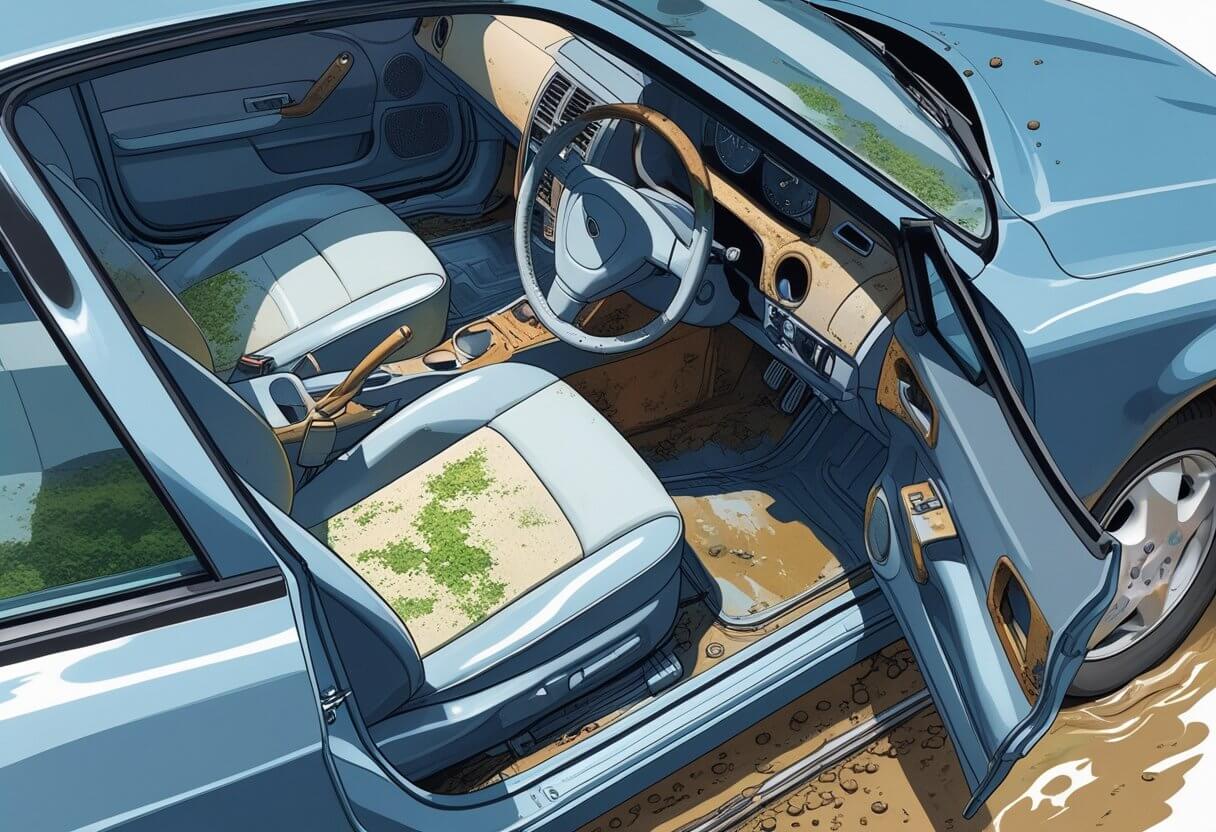
Critical Signs of a Flood-Damaged Car
Identifying the warning signs of a flood-damaged car can save you from costly repairs and long-term risks. Even if a seller tries to hide the damage, careful inspection can reveal subtle clues. Below are the most important areas to check.
Checking for Water Stains and Mud
Look for:
Water lines or silt on door edges, under dash, under floor mats
Discoloration on upholstery or carpet
Dried mud in trunk, glove box, or spare tire well
A UV flashlight can reveal invisible watermarks. Even deep cleaning rarely hides all traces.
Inspecting for Rust and Corrosion
Check for rust in unusual places:
Seat tracks
Screw heads
Under dash
Inside door jambs
Surface corrosion under seats or on wiring is a red flag.
Uncovering Mold and Musty Odors
A musty smell is a key warning sign. Check for:
Visible mold on seats, headliner, carpets
Odors from AC vents (indicates mold in ducts)
Sellers often use air fresheners to mask smells — investigate if scents seem too strong.
Identifying Oil and Engine Bay Issues
Open the hood and:
Check oil on dipstick: milky or cloudy = water contamination
Look for mud, corrosion, or debris in fuse boxes, battery tray
Inspect transmission and brake fluid
Cloudiness or separation = past water intrusion. Persistent dampness or rust around electrical parts = red flag.
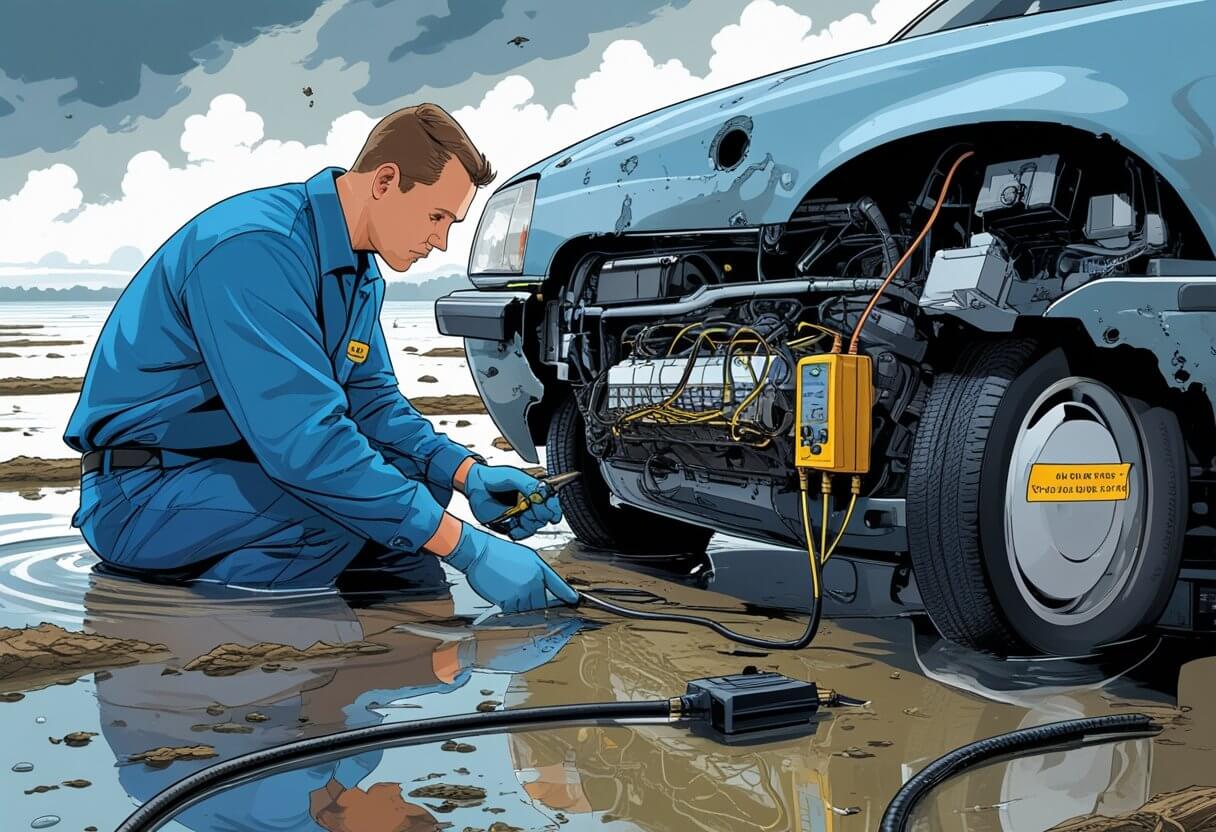
Interior and Cosmetic Clues to Flood Exposure
Mismatched or New Upholstery
Flooded cars are often reupholstered to hide damage. Look for:
Brand new carpet in an older car
Mismatched seat colors or materials
Damp, brittle, or musty foam under seats
Brittle or Discolored Wires
Moisture degrades wiring:
Wires become brittle or change color
Green/white powder on connectors = corrosion
Frayed or hardened insulation = wires dried after being wet
Signs of Water Lines and Lingering Moisture
Look for:
Faint brownish tide marks on door panels, seat frames
Lingering dampness under carpet or rear seats
Rust on footwells or seat bolts
Assessing Mechanical and Electrical Systems
Flood damage doesn’t just leave cosmetic traces — it can also compromise a vehicle’s most critical systems. Electrical components, sensors, and even the braking system may show subtle but dangerous signs of water exposure. A thorough check of these areas is essential before making a purchase.
Testing Electrical Components and Warning Lights
Test:
Dashboard lights (ABS, airbag, engine) – should turn off after ignition
Power windows, locks, seats, mirrors
Headlights, turn signals, climate controls
Flickering or malfunctions = possible hidden water damage.
Examining Brake Pedal and Moving Parts
Press the brake pedal:
Abnormal resistance or noise = red flag
Rust on pedal arms or hinges = sign of water exposure
Check under dash and around pedal assembly for silt or mud
Evaluating Mechanical Systems for Flood Damage
Check engine bay for:
Mud, water stains, humidity
Milky oil or transmission fluid
Damp air filters or sediment
Listen for abnormal startup noises, rough idling, or hesitation — these can result from compromised sensors or internal rust.
Using the VIN to Detect Hurricane Car Damage
How to Locate and Inspect the VIN
VIN locations:
Dashboard (driver’s side)
Driver’s door jamb
Engine block
Title/registration
Check for:
Scratches, mismatched numbers
Corrosion or mud around VIN plate
Take photos and compare across all sources.
Cross-Checking VIN for Flood Reports
Use trusted databases:
NICB VINCheck
vinspectorai.ro
Carfax
NMVTIS
Look for:
“Flood”, “salvage”, or “water damage” in history
Claims related to hurricanes or storms
For additional tips on interpreting VIN details, check out [5 Surprising VIN Facts Every Car Owner Should Know].
✅ Always verify with multiple sources.
VIN Report Indicators: ‘Salvage/Flood’
🔹 Label: Salvage
Meaning: Total loss by insurer
🔹 Label: Flood
Meaning: Water damage reported
🔹 Label: Rebuilt
Meaning: Repaired after salvage
If any of these appear, proceed with caution.
What to Do If You Suspect a Flood-Damaged Car
If you think a vehicle may have been exposed to floodwaters, don’t take chances. Even if the seller insists it’s fine, hidden damage can lead to expensive repairs later. The safest move is to combine a professional inspection with proper reporting and documentation.
Steps for Professional Evaluation
Hire an ASE-certified mechanic
Request a written inspection report
Consider a specialized flood-damage inspection
Reporting Suspected Flood-Damaged Cars
Report to:
State DMV
National Insurance Crime Bureau (NICB)
Consumer protection office
This helps stop fraud and protect others.
Protecting Yourself from Fraud
✔️ Obtain a VIN report
✔️ Demand documentation
✔️ Arrange for independent inspection
✔️ Keep copies of all transactions
Avoid cash-only deals and insist on written guarantees.
Final Advice: Don’t Buy Blind
Always check the VIN history before buying. For a complete step-by-step guide on inspecting a used car, visit this article.
A flood-damaged car might seem like a bargain — but it can cost you thousands.
👉 Always check the VIN history before buying.
Check for Hurricane Car Damage VIN on vinspectorai
Know the real history. Avoid the scam.
Frequently Asked Questions
Get answers to common questions about Flood-Damaged Cars: How to Spot, Avoid & Check VIN History
Uncover Complete Vehicle History Reports
Discover critical vehicle information before you buy. Our VIN decoder reveals accident records, title status, recalls, and service history to help you make informed decisions.
Related Articles
Explore Tags
More from Vehicle Reviews
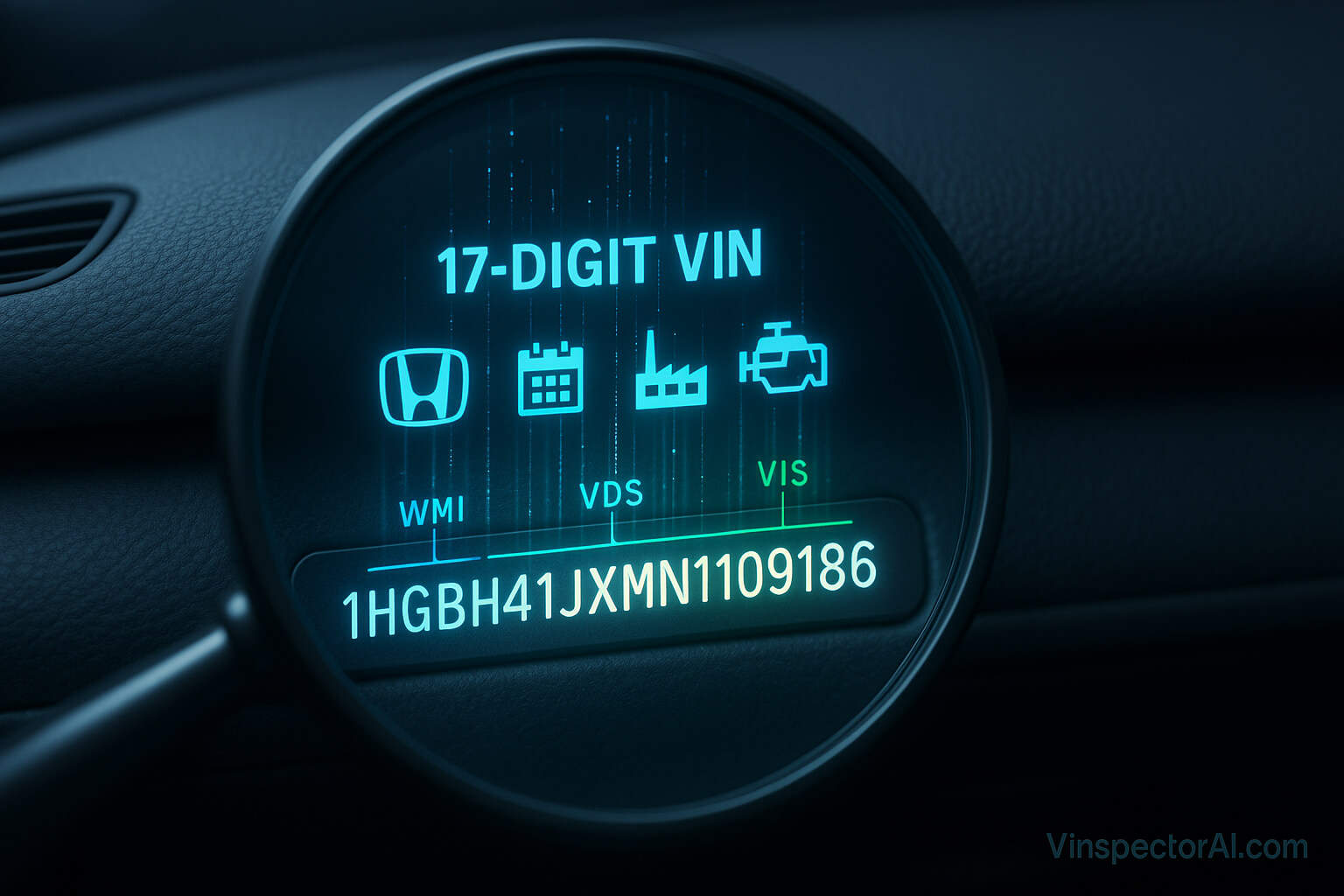
Decode your VIN number like an expert! Learn what each digit means and uncover your vehicle's hidden history. Get a free VIN check at VinspectorAI.com

Explore the fascinating history of cars, groundbreaking innovations, and future trends like electric vehicles and autonomous driving. Discover how automobiles have transformed our world
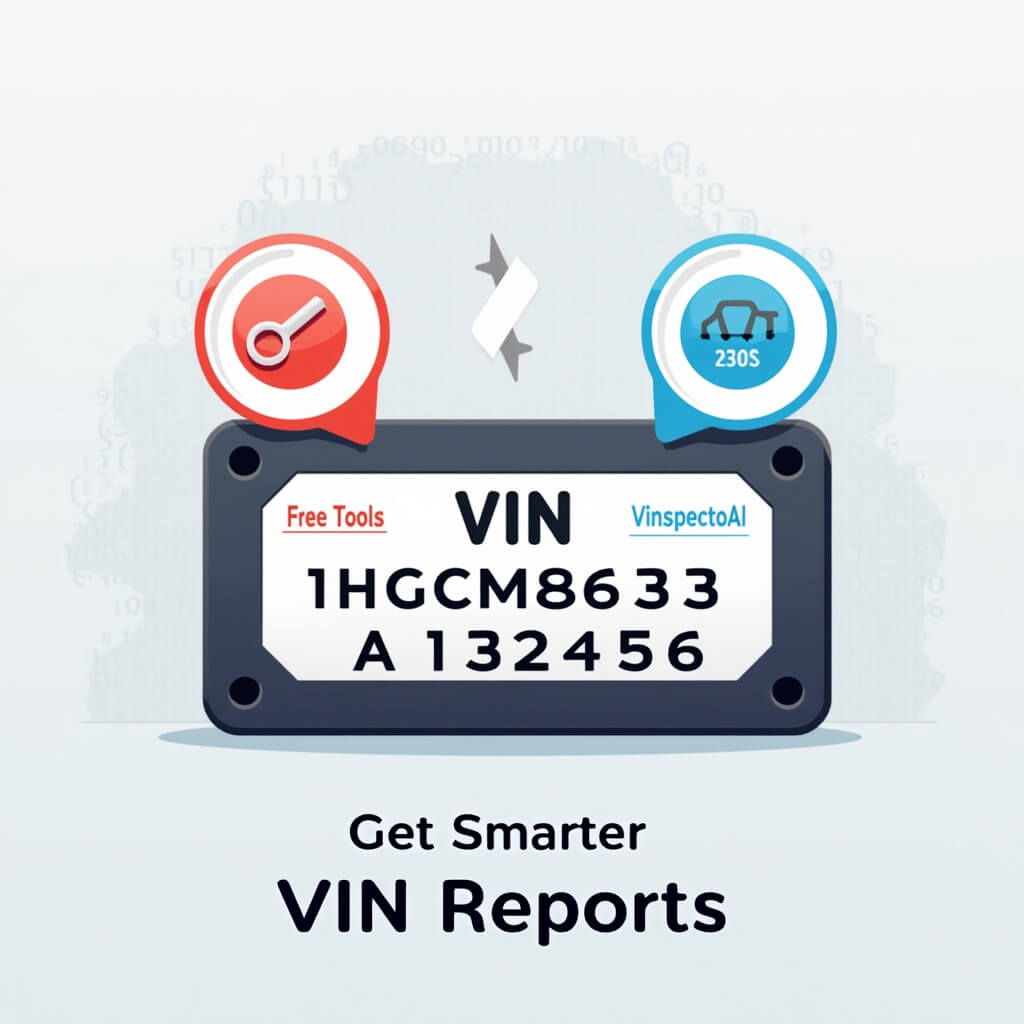
AI beats basic VIN checks! VinspectorAI delivers 3x more data than free tools for smarter used car decisions. Get your report instantly. try now!